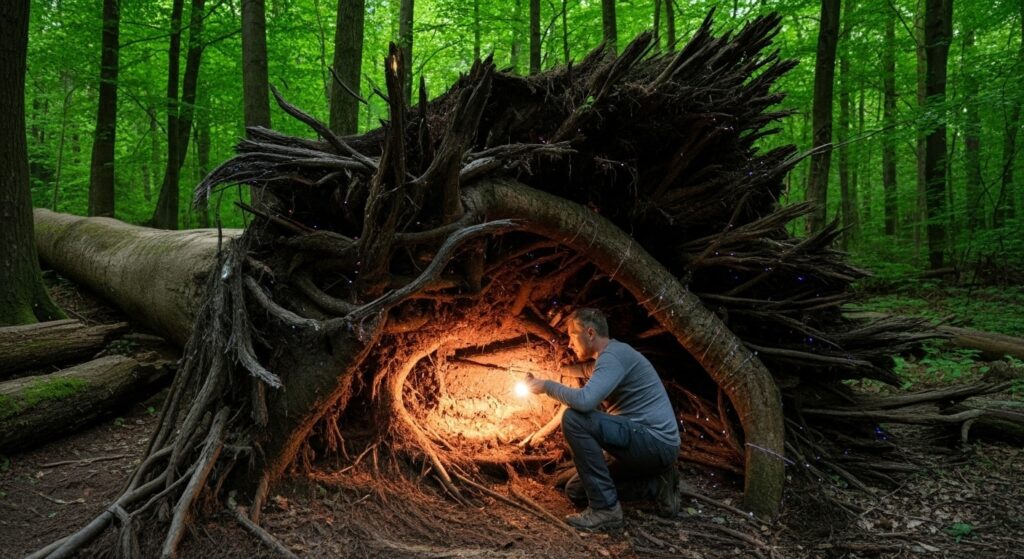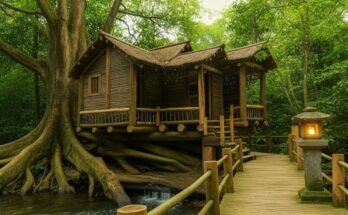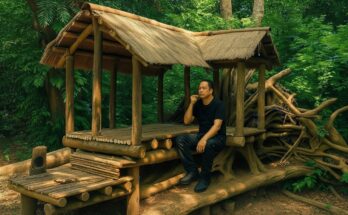I set out to build a cozy and hidden bushcraft shelter deep in the forest, choosing an enormous fallen tree as the perfect natural foundation. The massive hollow inside the tree offered the ideal space to create a secret hideout, camouflaged naturally by roots, moss, and surrounding forest debris. My goal was to make a shelter that blends in completely with the environment, providing solid protection from the weather while remaining invisible to anyone passing by.

The construction process involved clearing the hollow space carefully without disturbing the natural integrity of the tree. I used my bushcraft knife and hand saw to shape and fit materials, reinforcing the structure subtly with natural debris like moss and sticks to fill gaps. I focused on maintaining the shelter’s stealth by using colors and textures that matched the forest floor, ensuring nothing stood out to break the natural camouflage.
Inside, I worked to make the shelter as comfortable and secure as possible, considering insulation and dryness to withstand cold or wet conditions. The thick fallen oak tree’s hollow walls gave natural shelter from wind and rain, while the moss and additional layering helped retain warmth. This made the space inviting and safe for solitude or survival needs, a quiet retreat in the wilderness.
Reflecting on this build, I’m proud of how nature and skill came together to create a truly hidden, effective, and cozy shelter. It’s a testament to the power of bushcraft to harmonize with the environment rather than fight it, turning simple natural spaces into dependable refuges. I hope this shelter inspires others passionate about survival and wilderness living to explore creative, natural solutions for their own shelters.I built a cozy bushcraft shelter deep in the forest inside a massive fallen tree, choosing this natural hollow because of its perfect camouflage among roots and moss. This location offered me excellent protection from the elements while remaining invisible to anyone passing nearby. I wanted to create a hidden sanctuary that blends seamlessly into the forest landscape.
The construction involved careful clearing of the hollow space, using my bushcraft knife and hand saw for precise shaping of materials. I reinforced the shelter using natural debris like moss and branches to fill gaps, maintaining the camouflage by matching colors and textures with the surrounding forest floor. This approach kept the shelter discreet and protected from harsh weather.
Inside, I focused on making the shelter warm and dry, relying on the thick walls of the oak tree hollow and additional layers of moss for insulation. This created a comfortable space suitable for survival and solitude in the wilderness, allowing me to stay protected even in adverse conditions.
This project was a fulfilling blend of nature and skill, demonstrating how to transform natural formations into safe, hidden shelters. It highlights the essence of bushcraft—working with the environment rather than against it. I hope my experience encourages others passionate about outdoor survival to explore building creative, natural shelters like this one.


